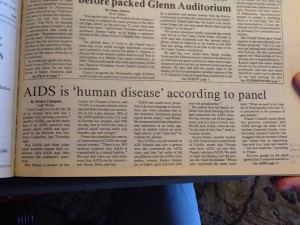I had never really questioned the efficiency or stability of monogamous marriage system of ours before reading the article Why monogamy is natural by an Emory Law School professor, John Witte Jr. I always thought that faithful monogamy was the normal and standard pairing system that is just for everyone and prevents families from degenerating. However, I was not much convinced by the article’s reasoning, and actually became more suspicious about the nature of monogamy. I still think monogamy is the most fitting system, and personally I have never cheated even in my past ‘not-serious’ relationships, but the explanations of the article, which perhaps also include people’s common beliefs, looked quite questionable.
The first point was that “unlike most other animals, humans crave sex all the time.” With no further explanation, one can possibly infer that he was meaning that each member can have its designated mate when he/she needs it. However, being assigned with one mate for the rest of his/her life is only eliminating other possibilities outside the relationship. What if the married husband/wife does not want to be involved in sexual activities in a particular occasion? Of course, looking for another mate would mean another ‘opportunity cost’ as evolutionary biologists would say, but how much applicable is that to humans, especially females? These arising questions made the first argument somewhat seem like a reason why polygamy is natural.
The second reason was that “human babies are born weak, fragile, and utterly dependent for many years” and need help from both parents. However, chimpanzee society, which also has fragile infants with extended period of ‘child care’, raise their infants among their group members. Especially female members, together with the mother, take care of the young until it matures. Vast differences between human and chimpanzee do exist and would complicate the argument, but this counter example shows that monogamy is not the only solution for overcoming our vulnerability when young.
The third reason that “most fathers will bond and help with a child only if they are certain of their paternity” seems weak for supporting the argument ‘why monogamy [for humans] is natural.’ I am actually little curious if Brad Pitt will feel offended or really good about himself after hearing the quoted sentence. The author’s argument is quite true if we look at the example of infanticide shown by lions and some primate species who kill babies of other males upon taking over a new group. However human ethics are much more mature than that as shown by good adoption system. Adopting fathers are probably not the most fathers, but we do have many opposing examples of altruistic fathers who take care of children who are genetically not his.
The last point the author mentions is that “men have historically been more prone to extramarital sex than women.” This sentence, again, seems to say that polygamy is the ‘natural’ form of our relationship, at least for men, since extramarital sex would mean that the person’s instinctive desire, which should be ‘natural,’ was not satisfied by his marriage. The author also mentions in the same paragraph that “humans have the freedom and the capacity to engage in species-destructive behavior in pursuit of their own sexual gratification.” However, he is also inevitably saying that humans have the freedom and the capacity to engage in species-productive behavior against their own sexual gratification by submitting to the societal norm, monogamous marital system, which sounds little ‘unnatural’ now.
Polygamy in the history or some primitive societies of Africa or Asia are sometimes viewed as barbaric and looked down upon. However, isn’t something barbaric less artificial and closer to our unpolished nature? One of the readers of the article, ‘reformthesystem’ commented, “In English language, “naturally” is only a synonym for: of course, customarily; not absolutely.” I guess we would need to define the word, ‘natural’ in the first place in order to have a proper discussion of whether monogamy is natural or not. However, I arrived at my own conclusion that monogamy can sometimes be ‘unnatural’ for each individual, but would be ‘natural’ for the human society as a whole, in terms of promoting the stable environment for everybody.





